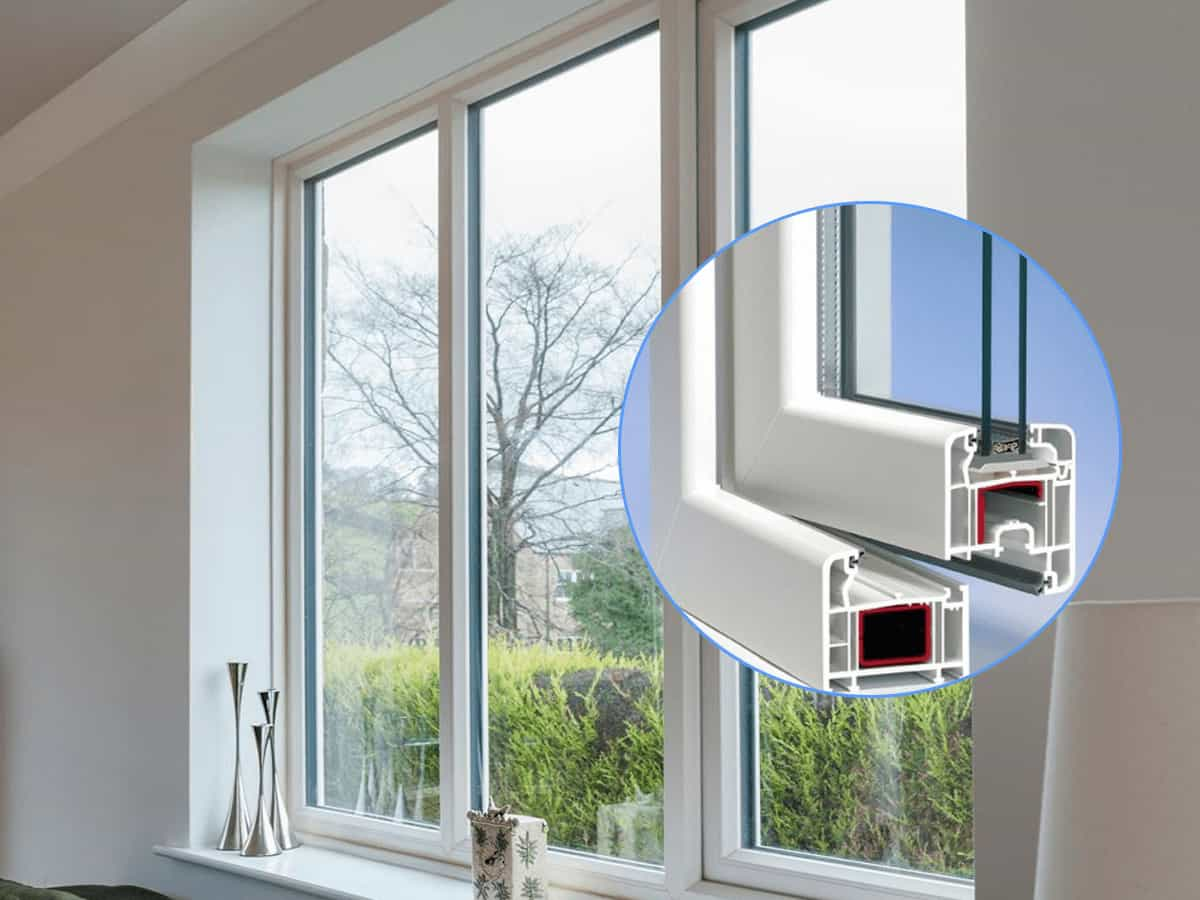When choosing new windows for your home, the debate between double glazed UPVC windows with standard glass and those with low-e glass is crucial. Each option offers distinct advantages in energy efficiency, cost, maintenance, aesthetics, and noise reduction. This article provides a detailed comparison to help you make an informed decision.
Understanding Double Glazed and Low-E Glass UPVC Windows
What Are Double Glazed UPVC Windows?
Double glazed windows consist of two glass panes separated by an insulating air or gas-filled space, significantly improving thermal insulation over single glazed windows. UPVC (unplasticized polyvinyl chloride) frames are widely used due to their durability, low maintenance, and energy efficiency.
What is Low-E Glass?
Low-emissivity (low-e) glass is coated with a microscopic metallic layer that reflects infrared heat while allowing natural light to pass through. This helps reduce heat transfer, making homes more energy efficient.
Energy Efficiency Comparison
Energy efficiency in windows is measured using two key factors:
- U-Value: The rate of heat transfer through the window (lower is better).
- Solar Heat Gain Coefficient (SHGC): The amount of solar radiation transmitted (lower SHGC means less heat gain in summer).
| Window Type | U-Value (W/m²K) | SHGC |
|---|---|---|
| Double Glazed Standard Glass | ~2.8 | ~0.60 |
| Double Glazed Low-E Glass | ~1.8 | ~0.30 |
| Single Glazed Low-E Glass | ~3.0 | ~0.30 |
Key Takeaways
- Double glazed standard glass offers solid insulation but allows higher solar heat gain, which can be beneficial in cold climates for passive heating.
- Double glazed low-e glass provides superior insulation and minimizes heat gain, making it ideal for warm climates where cooling costs are a concern.
- Single glazed low-e glass is less efficient than double glazing and is rarely used in modern UPVC windows.
Cost Analysis
| Window Type | Approximate Cost Per Window |
|---|---|
| Double Glazed Standard Glass | $250 – $700 |
| Double Glazed Low-E Glass | $350 – $850 |
- Double glazed standard glass is more affordable upfront, but may lead to higher energy costs over time.
- Low-e glass costs more initially, but reduces energy bills due to better insulation, making it cost-effective in the long run.
- Maintenance costs are similar for both, as UPVC frames require minimal upkeep.
Aesthetic Considerations & Light Transmission
- Low-e glass may slightly reduce light transmission due to its coating, but the difference is usually negligible.
- Standard double-glazed windows allow more natural light, which may be preferable for rooms requiring maximum daylight.
Noise Reduction Capabilities
- Both double-glazed standard glass and low-e glass offer superior noise insulation compared to single glazed windows.
- Low-e glass does not significantly affect soundproofing, as it primarily improves thermal insulation.
Climate-Specific Recommendations
Cold Climates:
- Standard double-glazed windows can be preferable as they allow more solar heat gain, reducing heating costs.
- Low-e glass designed for high solar gain (passive low-e) may also be an option.
Warm Climates:
- Low-e glass is the better choice, reducing indoor heat gain and minimizing air conditioning expenses.
Mixed Climates:
- Low-e glass provides year-round efficiency, helping balance heating and cooling needs.
Conclusion: Which Option is Best for You?
- If you live in a hot or mixed climate, double-glazed low-e glass UPVC windows are the best choice for maximum energy savings.
- If you live in a cold climate, standard double glazed windows may be preferable to benefit from passive solar heating.
- Cost-conscious buyers might prefer standard double glazing, but long-term savings make low-e glass worth considering.
Final Recommendation
Before purchasing, consult window professionals to determine the right low-e glass type for your region and check local energy efficiency ratings. The best choice depends on your climate, budget, and home insulation needs.
Key Citations:
- Efficient Windows Collaborative
- Windows for Life: Low-E Glass
- Metro Performance Glass
- Vitro Architectural Glass: How Low-E Works

